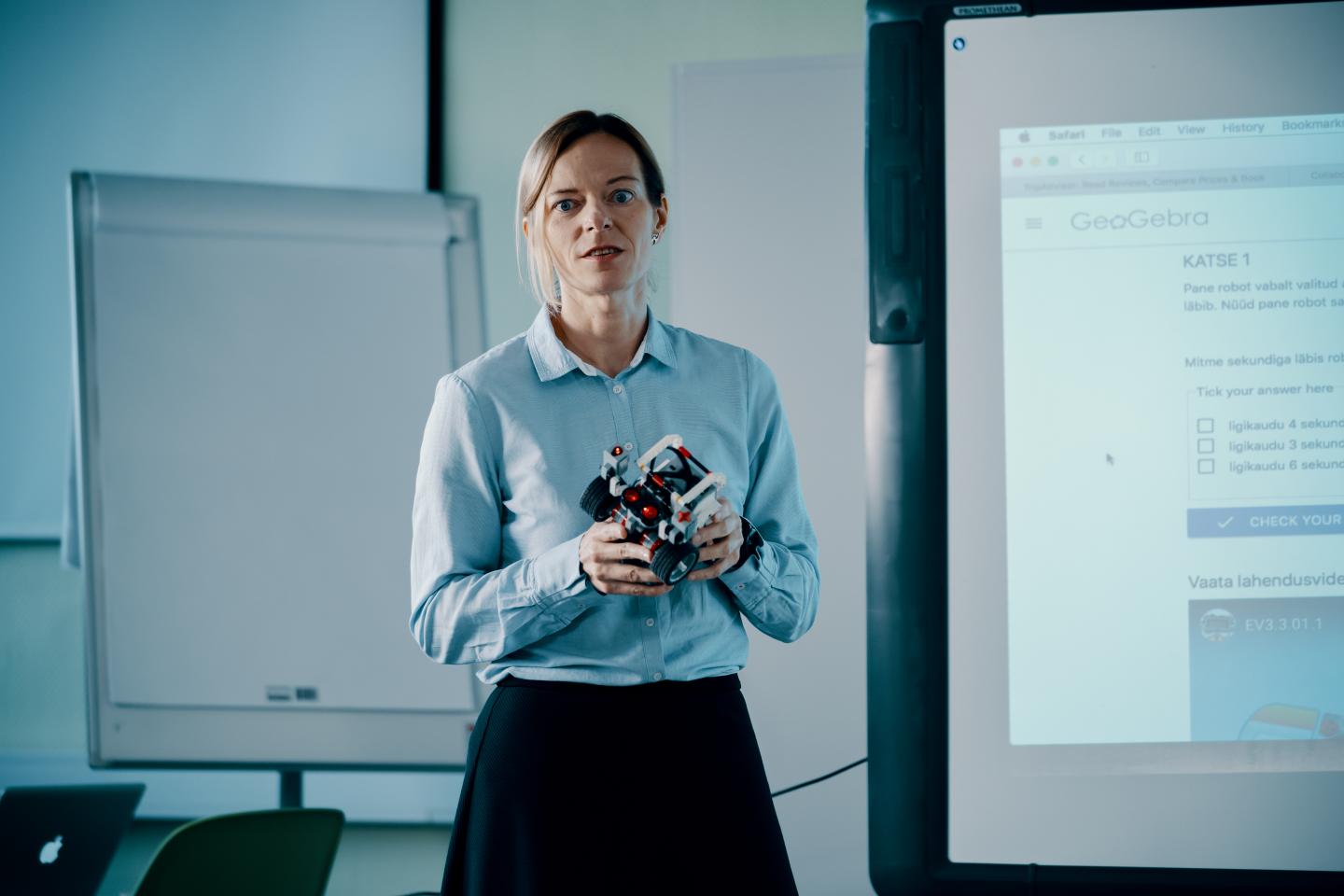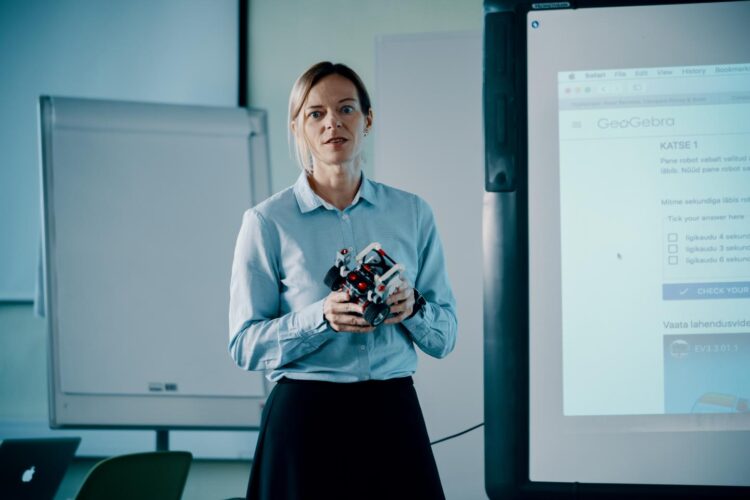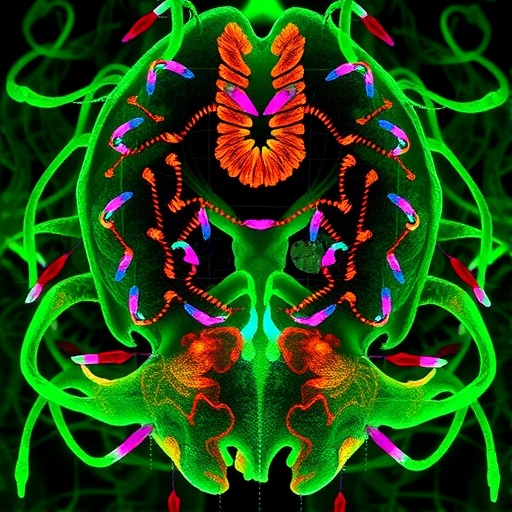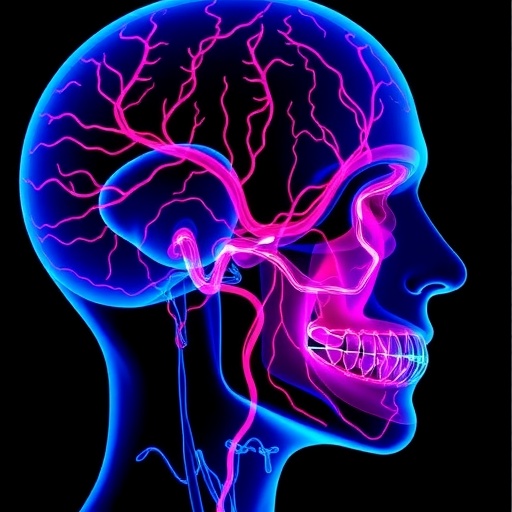
Credit: Tallinn University
In the recent years Tallinn University has paid a lot of attention to becoming agile in business collaboration, including both local and international EdTech companies. Their collaboration with the company TTS Group started last year and the common interest is to develop and implement novel STEAM and educational robotics related teaching practices for kindergartens and primary schools. The special interest lies in inclusive education and integrating technology with the subjects that are taught in Estonian educational institutions.
There are handful of problems that the educators all around the world face when trying to bring new technology-related teaching methods into classrooms. Despite of all the knowledge there is, despite the research that has been conducted over the decades, the reality is that the majority of teachers are still reluctant or suspicious towards technology enhanced learning methods. There are several reasons for that, for example the lack of paid time, infrastructure or lesson designs. But an additional problem – something that is easy to miss – is that valuable resources are wasted during unsuccessful implementation trials: not only the physical or financial resources but also the time of teachers and children who have been involved in these processes.
The European Digital Action plan for years 2021-2027 foresees that there is an urgent need to foster the development of high-performing digital education ecosystems. Among many other must-to-have conditions the plan emphasizes the need for digitally competent and confident teachers and education and training staff. Also, the plan requires enhancement of digital skills and competences for the purposes of the digital transformation by developing basic digital skills and competences from an early age (including digital literacy and computing education), and by providing good knowledge and understanding about data-intensive technologies.
Based on the European Digital Action plan there is a need of good approach for supporting teachers’ professional development so they would become digitally competent and fearless towards technology, including robots and STEAM kits. As a part of Janika Leoste’s PhD thesis she has researched this field and highlighted two important questions. First, how could we describe the implementation process of novel technology-related teaching methods in teachers’ classroom practices? Are there some distinct stages and how long do they last? Second, what are the factors that influence teachers’ decision to continue or discontinue using the novel method? Are these factors constant throughout the process or do they vary – depending of the stage the teacher has reached when using the innovation. More about this topic from the article that was published in the Interaction Design and Architecture journal number 47: http://interfacce.
Based on the different technology acceptance models and interviews with 23 teachers Leoste identified 3 main stages that a teacher has to go through before the novel teaching method becomes a sustained part of their teaching practices. These stages are Awareness, Acceptance and Adoption.
In the awareness stage the teacher has heard or read about the innovation – for example how to use TTS’ Rugged Robot in out-door learning activities, but she has not started to use this innovation yet. This “first-date or falling in love” period is usually surprisingly short, lasting from a few days up to a few months and it is followed by trying to use the innovation in real classroom settings. This testing period could be also called acceptance. For example, teacher uses recording pegs for supporting language learning at the kindergarten. This period lasts much longer compared to the “first date”, so it can be called an “engagement period”. The teacher needs in average one year to understand whether this method is for her. And finally, the adoption phase or “marriage decision” as a metaphor, where the teacher has made the decision to sustain the method, she has tried it with her students – this is the “happily ever after” part. Based on the research literature, this adoption has to last at least 1-2 years before it can be claimed that the teacher uses a Bee-Bot robot in their teaching practices as naturally as they use, for example, a chalkboard or a projector.
These were the innovation process stages, but in addition, there are different motivators and factors that play crucial roles in different stages. In the first stage the biggest motivator is personal interest. At the same time, the importance of organizational support and technological readiness cannot be underestimated – does the educational institution have sufficient number of robots, tablets, STEAM kits and so on?
In the second stage there are many different factors at play, but the role of collaborative knowledge creation and scaffolding practices is something that just can’t be ignored. What does it mean? It means that teachers will need to co-construct the knowledge about the new method with their colleagues, they will want to share their experience and to get good examples of teaching materials that can be adapted for their needs. This is the stage where teachers and EdTech companies can benefit from the school-industry-university partnerships and long-term professional teacher development programs. In the last, adoption stage, one of the must-have components is the perceived value of the new teaching method. For example, during the acceptance stage, the teacher becomes convinced that math learning activities with Blue-Bot robot help children to better understand abstract math concepts. But one should not forgot that organizational and technology related factors don’t fade over time. It means that sustaining technological innovations at education has its cost. New employees need training, robots will get outdated one day, new technologies are coming, and so on.
Maybe one of the main takeaways from this research is the fact that if a teacher is currently using robots or STEAM kits today in her classroom then this doesn’t mean that she will continue to do so tomorrow. Paying attention to the stage where the teacher currently is and supporting her aspirations according to her current needs, based on the critical factors, is one of the key issues towards the sustainability of a new method.
Practical activities to support teachers in acceptance phase
One solution that the universities and educators can offer, is using long-term knowledge co-creation programs. At Tallinn University we have designed a training model called “Teachers’ Innovation Laboratory”. The researchers have identified different components that help to strengthen the understanding about new methods and to help to develop future-proof teachers. These components include educational technology, educational psychology, didactics, inclusive education and a lot of co-creation workshops with other teachers. The university led training days vary with teachers implementing the method at their workplace, and the whole process is powered by seamless workplace learning with colleagues. The whole suggested length of this type of training is from 3 months to one year. The suggested time between meetings should be one month. For now the researchers at Tallinn University have conducted courses of this type for more than two years and have gained several success stories with different STEAM and robotics related courses from early childhood to secondary. Even the COVID crisis and forced distance learning situation have not stopped the research. A good example is an ongoing one-year course in close collaboration with TTS Group, called “Using Robotics and STEAM-tools in Primary Education”. In January 2021 more than eighty Estonian kindergarten and primary teachers joined a long-distance learning course about learning to integrate various TTS robots and STEAM kits in their classroom practices. The course started with one week of intensive study during which Bee-Bot, Rugged Robot, light cube, microscope, interactive cat and creating interactive digital materials were taught. During this week the participants also created their first integrated activities. In addition, the researchers measured teachers’ digital competences with European Digital Competence Framework for Educators DigCompEdu.
Currently the researchers meet with the whole group once per month. For these meetings, teachers have prepared at least one new activity and they share their implementation and piloting experience. Although they have met only on distance so far, Estonian kindergartens have been open, so they have had a chance to pilot their materials. The plan is to finish the course in December 2021 and the researchers will compare the results of digital competences evaluation hoping to see some good improvement. So far the pilot study has shown that especially the teachers who have self-assessed themselves as beginners will advance significantly in almost all areas of digital competence.
Pilot Study: Bee-Bot floor robot
The pilot study is using Bee-Bot floor robots for supporting the development of social skills of small children with autism spectrum disorder and the study has had promising results so far. According to the previous research, the majority of robots used in these types of interventions are humanoid robots or robotic toys similar to pets. The researchers at Tallinn University had a hypotheses that similar results can be achieved by using an affordable floor robot, such as Bee-Bot (as most of the Estonian kindergartens are provided with Bee-Bot robots). The researchers designed a memory game consisting of eight pairs of emotion cards. First, the child and researcher played the game without the robot and then with the robot. They were interested whether there are noticeable differences in child verbal communication and attention span when playing the collaborative game with or without the robot.
The participants were three five-year old children with autism spectrum disorder diagnosis. The results showed that the verbal communication of participating children increased both in echolalia (repeating the words of their conversation partners) and in regular communication. A clear result with the attention span was not gained. Although we are just in the beginning with our research, we can already tell that especially with younger kids even simple robotic toys can be successfully used when thinking of potential therapy. The researchers have started repeating the study with their Spanish colleagues from Rey Juan Carlos Universidad, Madrid.
The whole world, education included, experiences accelerating change. Progress happens at an increasingly accelerating pace. To keep up with this change we have to make selections. Sometimes less is more, meaning that we don’t have to bring thousands of innovations into classroom. Rather we could support only tens of them to be sustained in teachers’ classroom practices. We can trust our teachers, because the innovations they finally select and stay with, will help our children to learn better and prepare them for the future. The researchers’ task is to support teachers, so they have time and resources to make the right decisions.
VIDEO of presentation at EduSummit21: https:/
###
Media Contact
Janika Leoste
[email protected]





